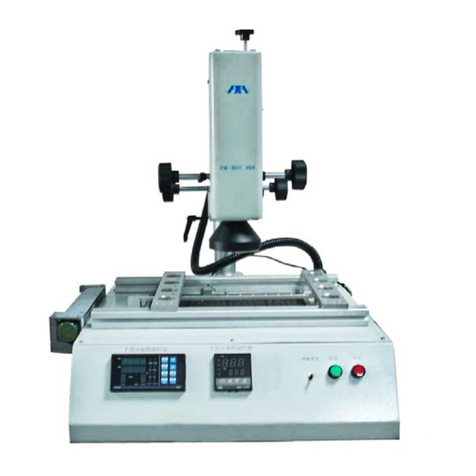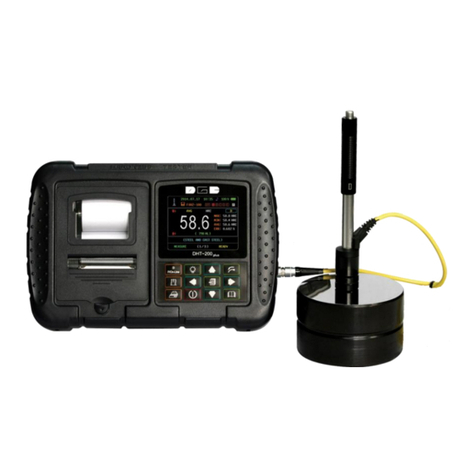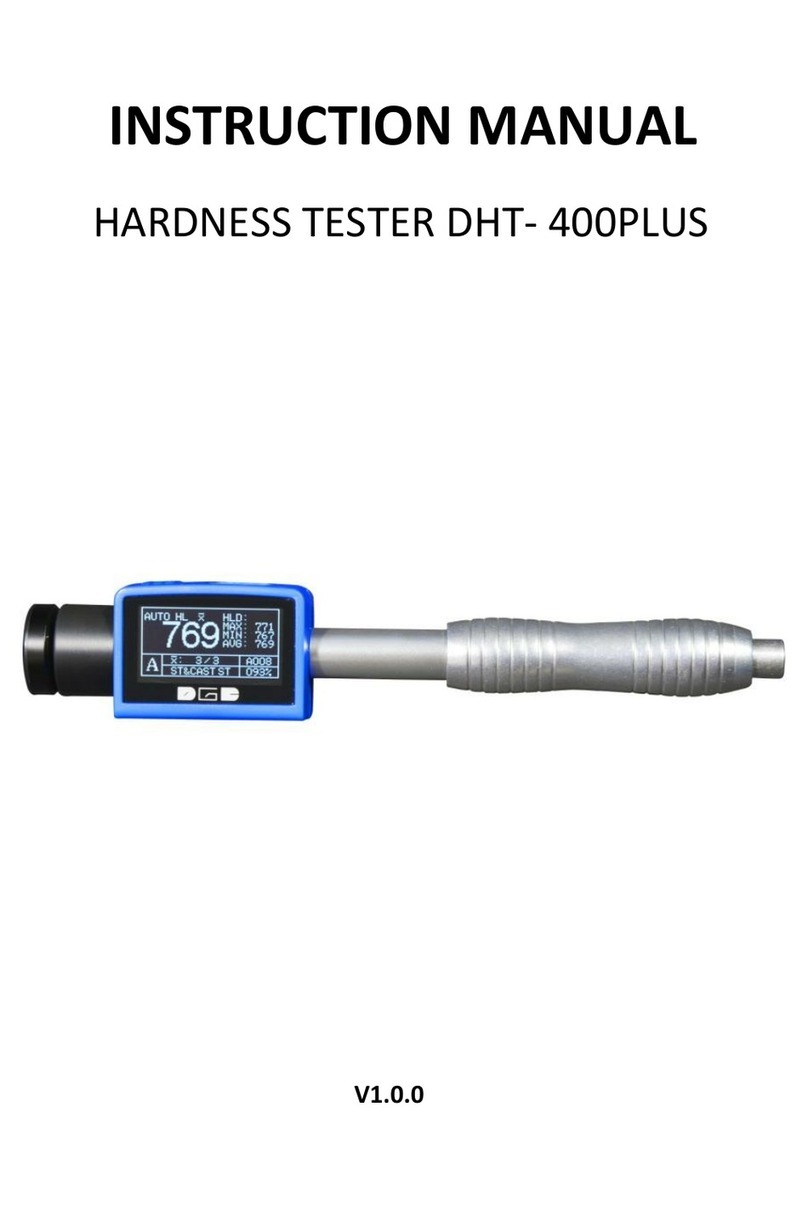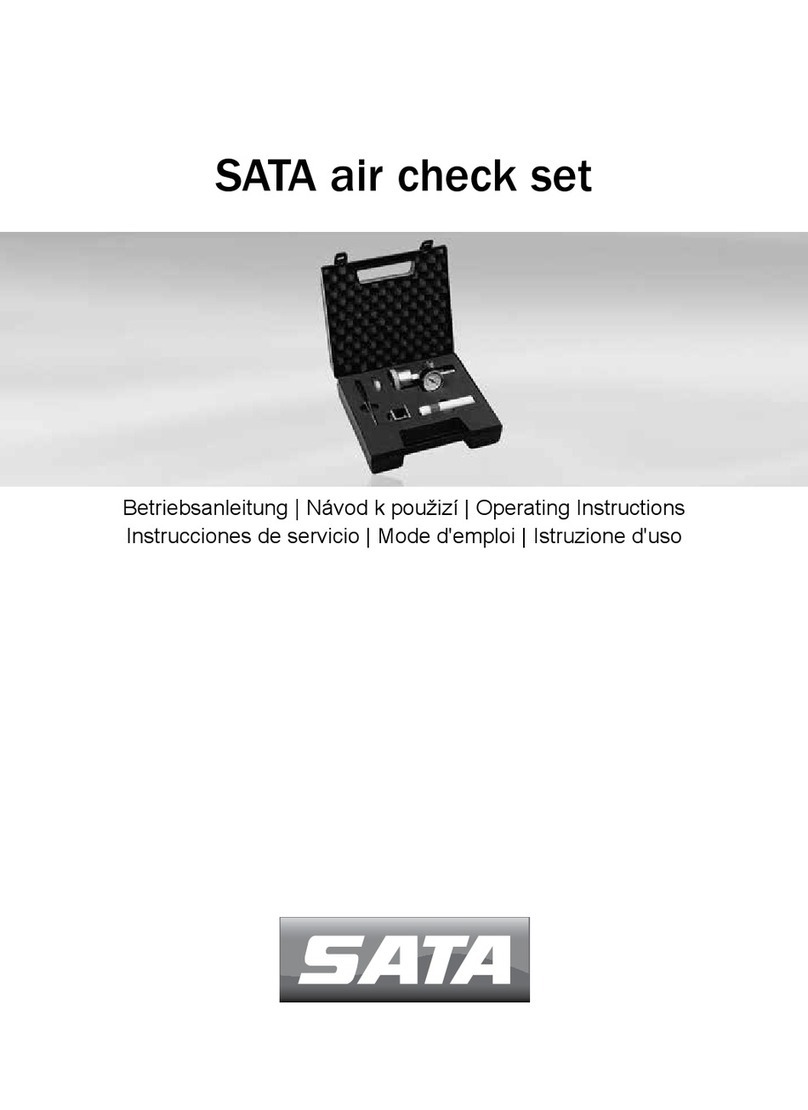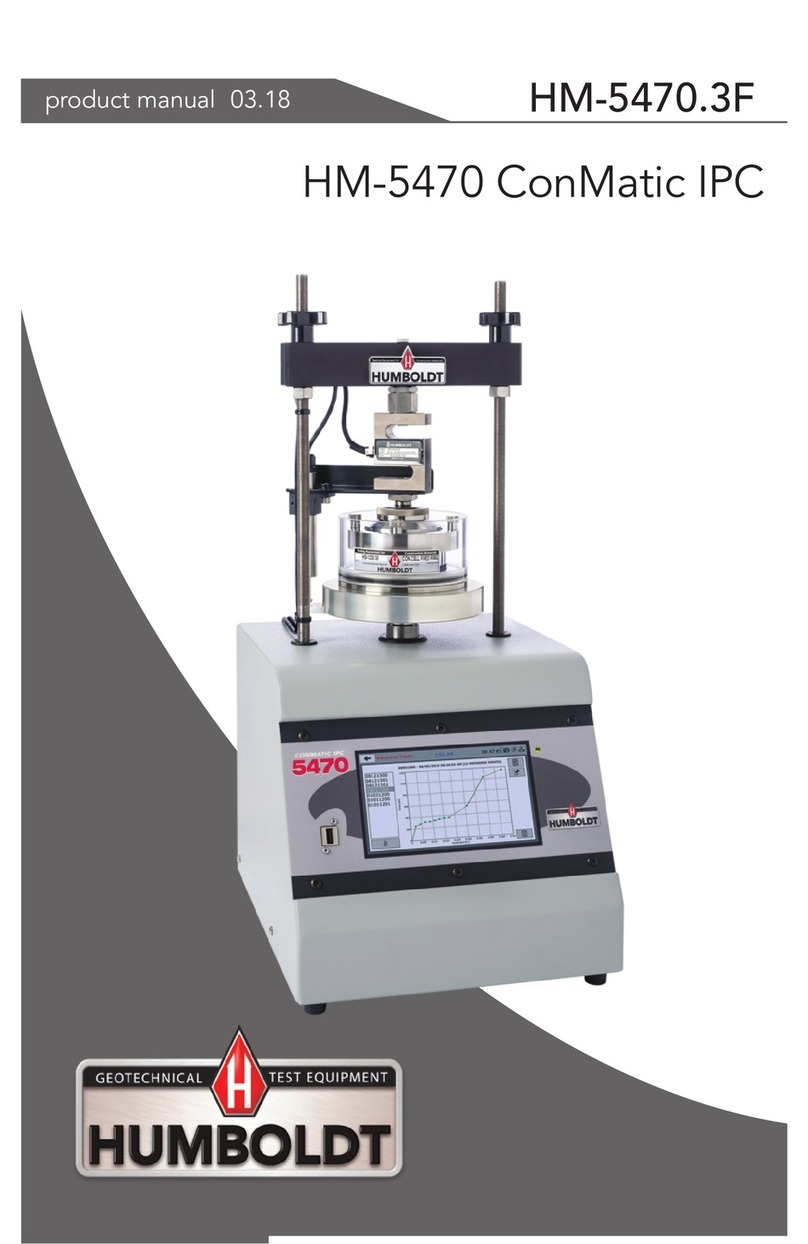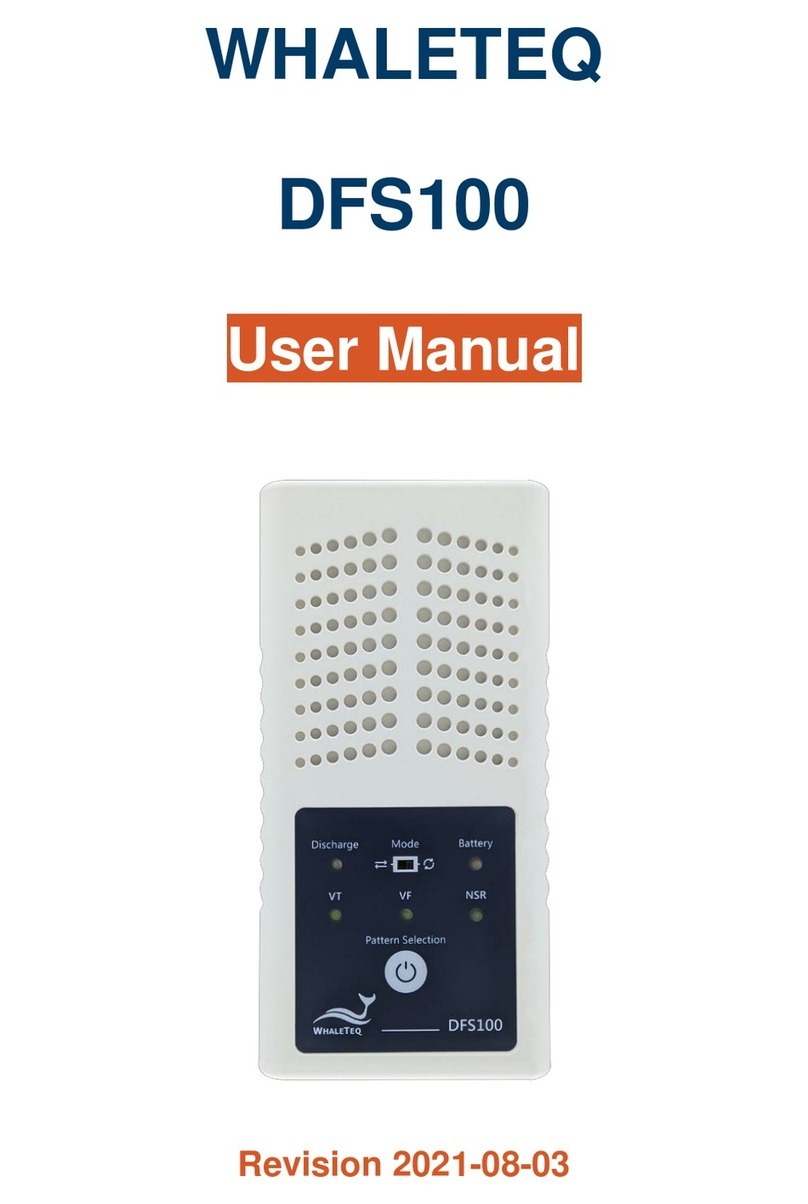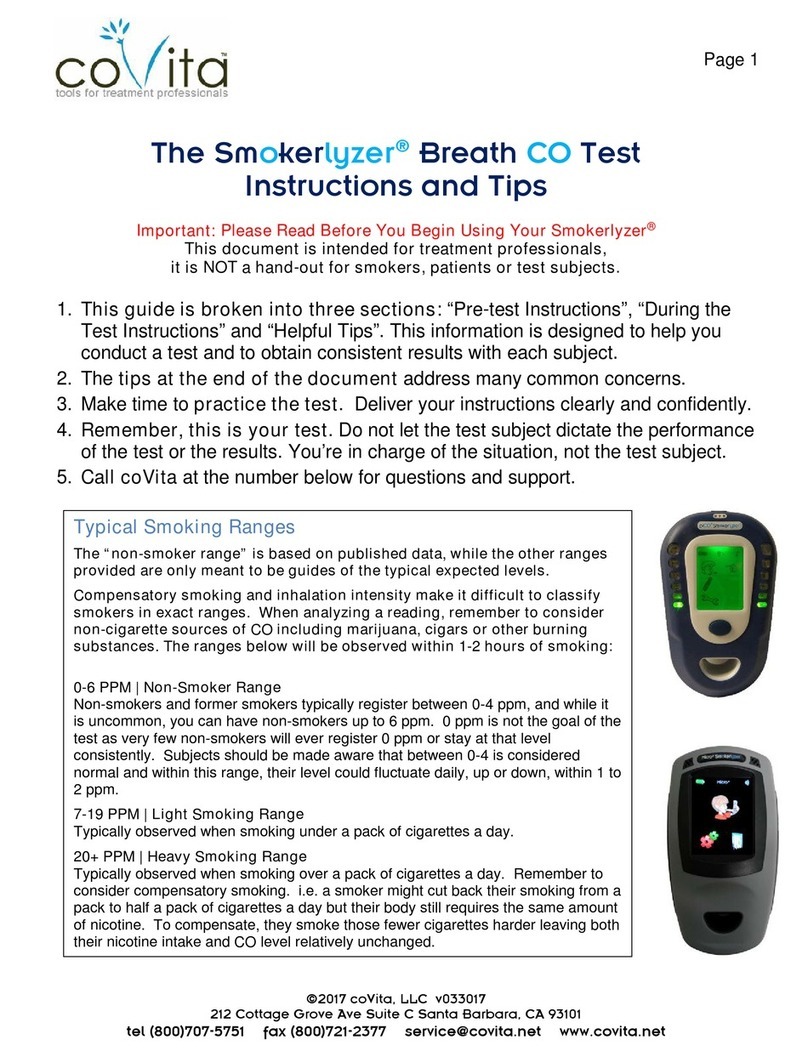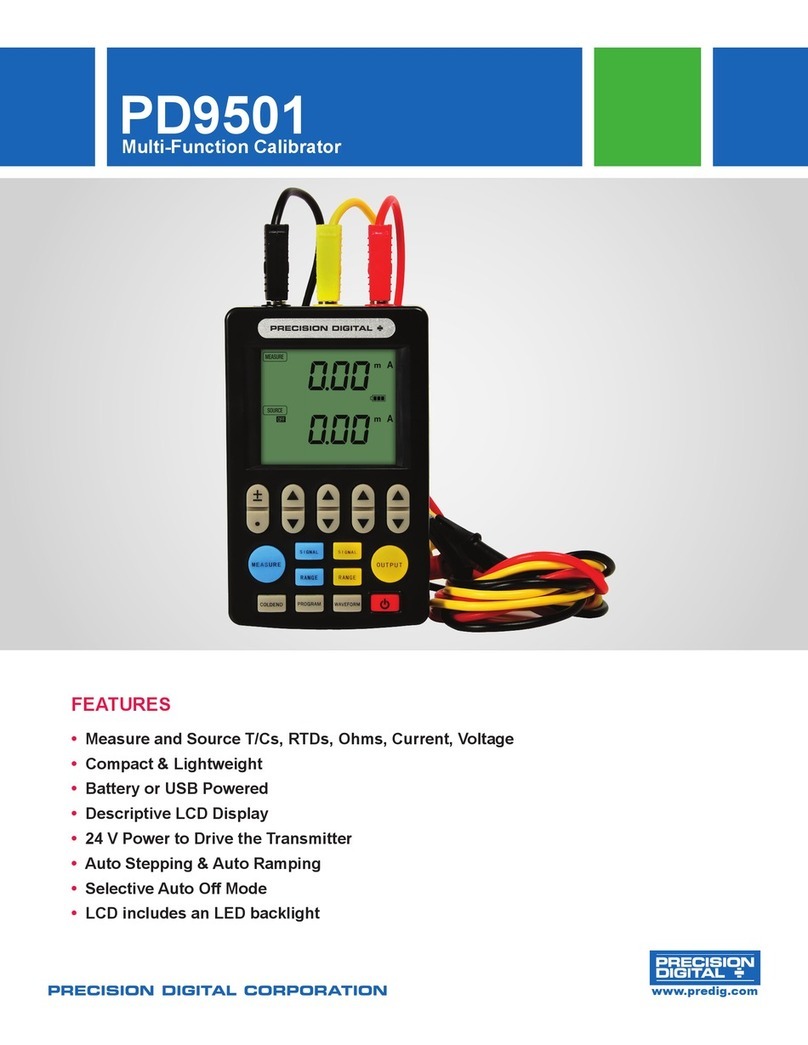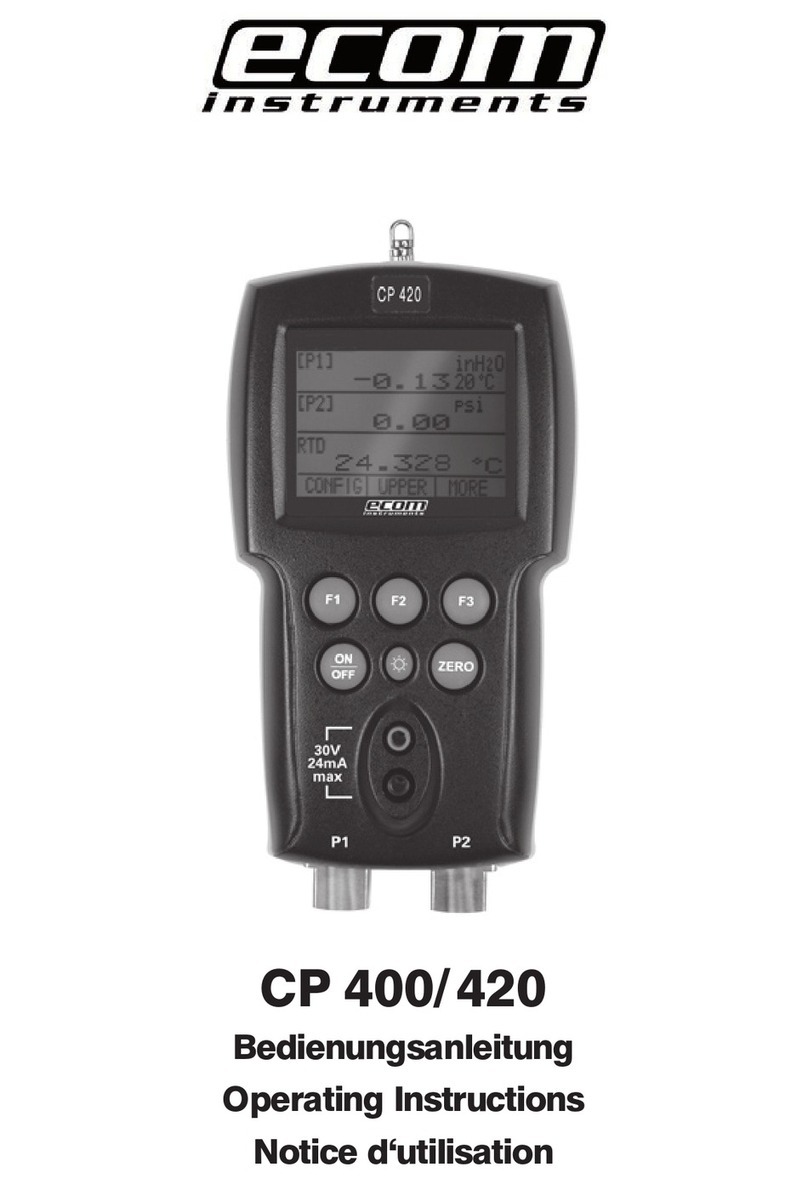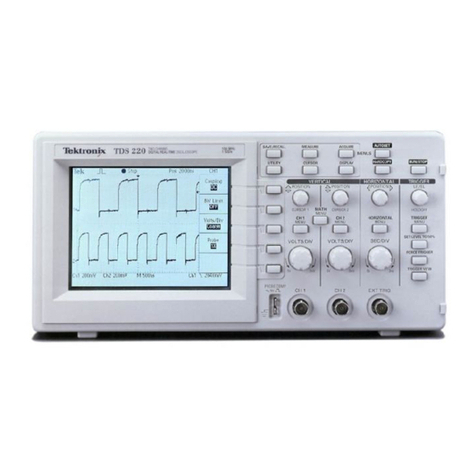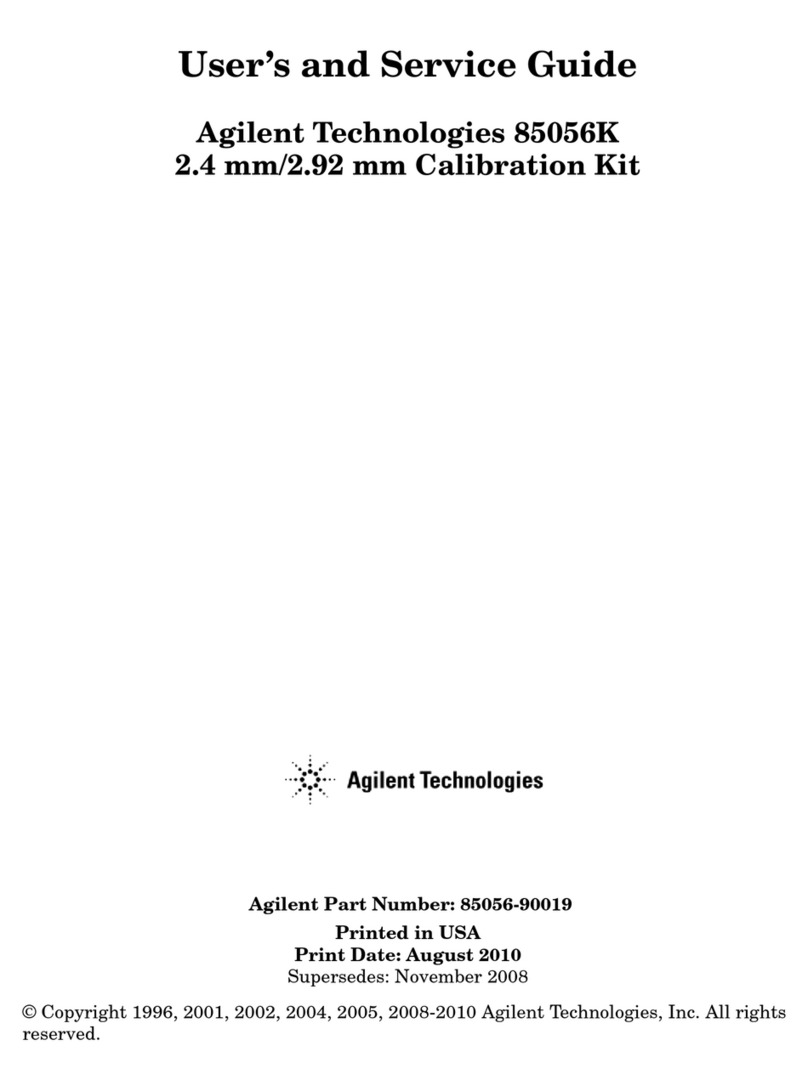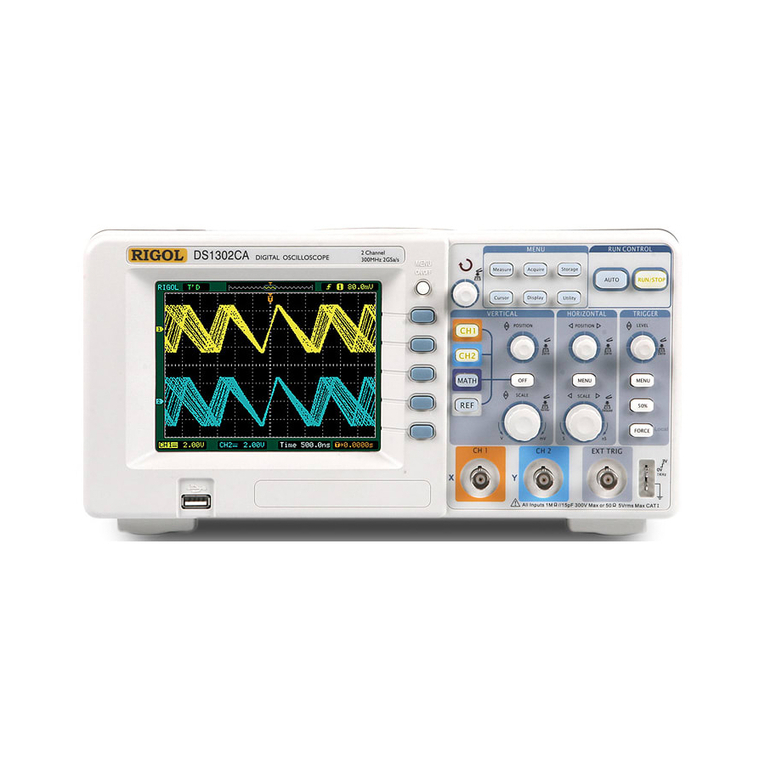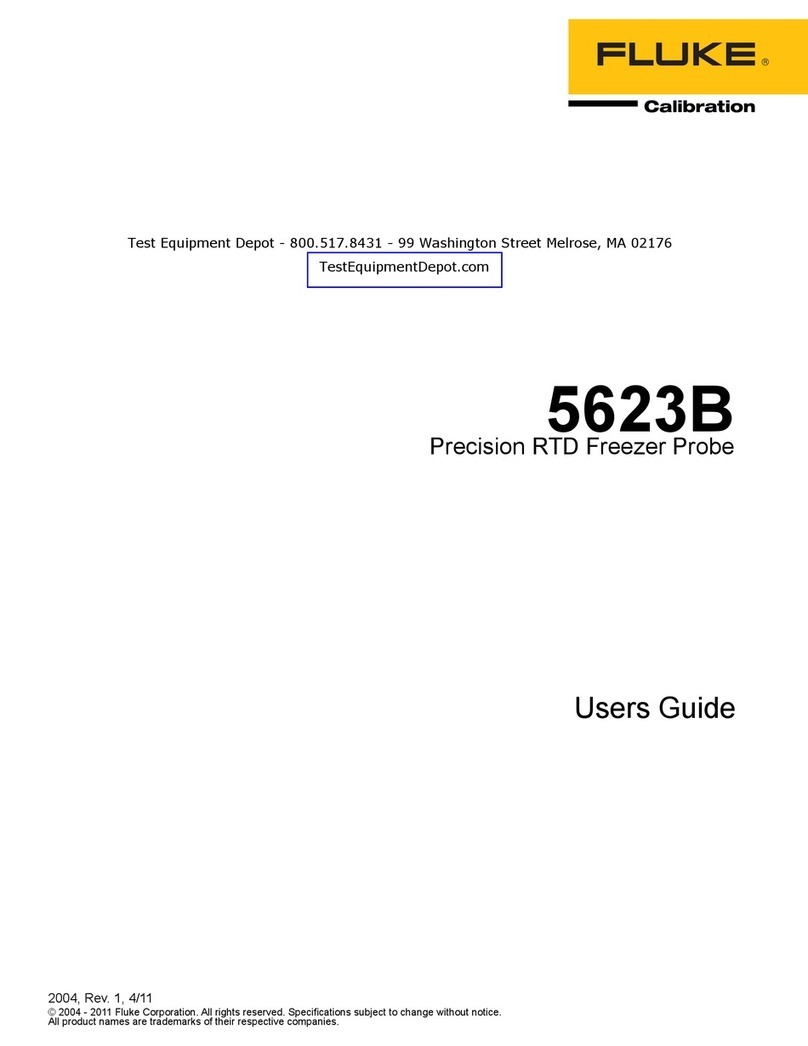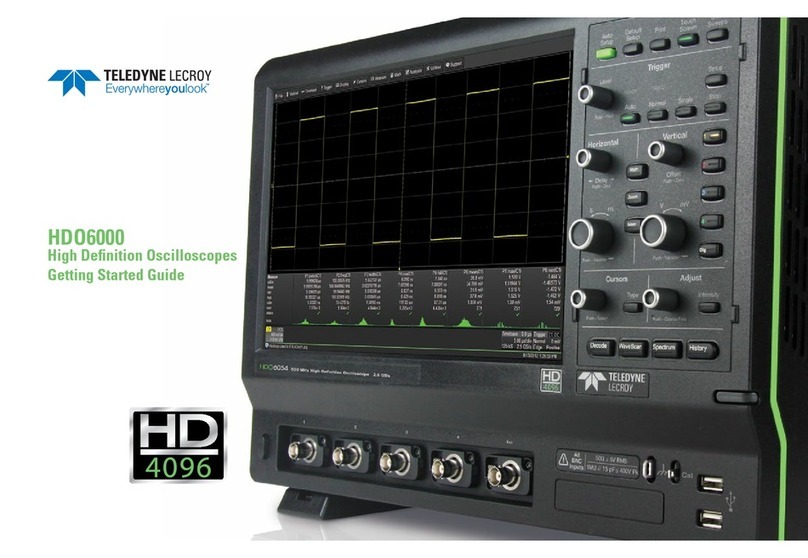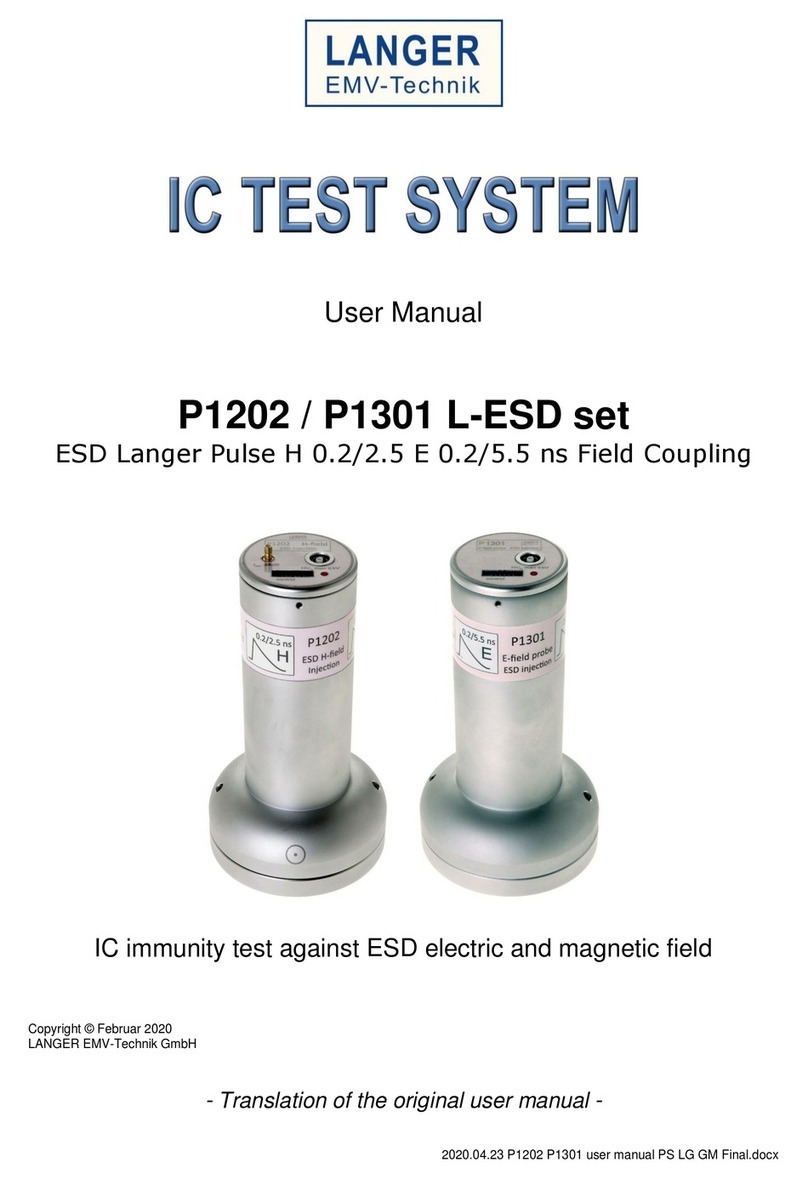DGC DHT-100Plus User manual

INSTRUCTION MANUAL
HARDNESS TESTER DHT- 100Plus
V1.0.0

CONTENTS
1.Summary ...............................................................................1
2. Principle of Leeb hardness testing method ............................1
2.1 History of Leeb hardness testing method.................................. 1
2.2 Definition of Leeb hardness...................................................... 1
2.3 Available Functions .................................................................. 2
2.4 Symbol of Leeb’s hardness values............................................. 2
3. Pre-treatment of work piece .................................................3
3.1 Work piece surface .................................................................. 3
3.2 Weight of work piece ............................................................... 3
3.3 Work piece surface hardened layer .......................................... 3
3.4 No strong magnetism on the work piece surface....................... 4
4. Selection and performance of impact device .........................4
4.1 Selection of impact device........................................................ 4
4.2 performance of impact devices................................................. 4
5. Functions of DHT-100Plus......................................................5
5.1 Technical specifications............................................................ 5
5.2 Nomenclature of DHT-100Plus.................................................. 5
5.2.1 Main unit............................................................................................. 5
5.2.2 Display area......................................................................................... 6
5.2.3 Keypad ................................................................................................7
6. Operation instruction............................................................8
6.1 Power on ................................................................................. 8
6.2 Parameters setting................................................................... 8
6.3 Measure .................................................................................. 8
6.3.1 Impact direction settings .................................................................... 8
6.3.2 Material and hardness scales settings ................................................9
6.3.3 Average times settings......................................................................10
6.3.4 Tolerance ..........................................................................................10
6.3.5 Calibration......................................................................................... 10
6.3.6 Standards .......................................................................................... 10
6.4 Files management.................................................................. 12
6.4.1 New file settings................................................................................12
6.4.2 Storage settings................................................................................. 12
6.4.3 Print file settings ............................................................................... 13

6.4.4 Delete file settings ............................................................................14
6.5 Other settings ........................................................................ 15
6.5.1 Date and Time settings ..................................................................... 15
6.5.2 Auto shutdown settings .................................................................... 15
6.5.3 Brightness settings ............................................................................16
6.5.4 Key sound settings ............................................................................ 16
6.5.5 Language settings.............................................................................. 17
6.5.6 Default...............................................................................................17
6.6 Data output through USB to PC .............................................. 17
6.7Deleting of wrong measuring data.......................................... 18
7. Repairing and Maintenance................................................. 18
7.1 Maintenance of battery ......................................................... 18
7.2 Maintenance of impact body tip............................................. 18
7.3 Maintenance of impact device cable....................................... 18
7.4 Maintenance of printer .......................................................... 18
7.5 Maintenance of instrument.................................................... 19
8. Packing list.......................................................................... 19
9. Appendix ............................................................................ 20
Appendix 1:Measuring range: ...................................................... 20
Appendix 2: Features of impact devices ....................................... 21
Appendix 3:Material Applicable table .......................................... 21
Appendix 4: Supporting rings ....................................................... 22

Hardness Tester DHT-100 PLUS
1
1. Summary
DHT-100Plus Leeb hardness tester, based on the principle of Leeb theory, can
be used for hardness testing of various metals. With the feature of compact
size, it is suitable for working on various circumstances. The Leeb hardness
values can be easily converted to HRC, HRB, HV, HS and so on. In order to
operate the instrument correctly and properly, users are required to read this
instruction manual completely before using it.
2. Principle of Leeb hardness testing method
2.1 History of Leeb hardness testing method
The Leeb hardness testing method was first introduced by Dr. Leeb in 1978.
It is defined as the quotient of an impact body’s rebound velocity over its
impact velocity, multiplied by 1000. Hard materials produce a higher rebound
velocity than that of softer materials. For a specific group of material (e.g.
steel, aluminum. etc.), Leeb hardness value represents a direct relationship to
its hardness properties. For ordinary metal, conversion curves of hardness HL
versus other standard static hardness (HB, HV, HRC, etc.) are available,
enabling you to convert HL into other hardness values.
2.2 Definition of Leeb hardness
An impact body with a spherical test tip made of tungsten carbide is propelled
against the sample surface by a spring force and then rebounds back. At a
distance of 1mm from the sample surface, the impact and rebound velocity of
the impact body are measured by the following method: A permanent magnet
embedded in the impact body, when passing through the coil in its coil holder,
induces in the coil an electric voltage proportional to the velocities of the
magnet. The Leeb hardness values are expressed by the following formula:
HL=1000×( Vb / Va )
Where:HL is Leeb hardness values
Vbis the rebound velocity of the impact body
Vais the impact velocity of the impact body
Figure 1 show the voltage produced during the impact and rebound of
impact body.

Hardness Tester DHT-100 PLUS
2
Figure 1 Voltage features of output signal
The Leeb hardness values can be converted to other hardness scales
directly, such as HV, HRC, HRB, HB and HS.
2.3 Available Functions
●320×240 matrix TFT Color LCD
●Auto connects to 32 bits / 64 bits computer system.
●100 files x 100 data can be stored.
●Auto identification of impact device D, DC, DL, D+15, C, G
●Quick entry of test numbers, test data, sample material type and impact
direction via the keypad.
●Multi-languages and Multi-hardness standards.
●Quick print out of all test results via optional Bluetooth printer or data
transfer without software.
●Auto converse to hardness value (HL, HRC, HRB,HB, HV, HSD)
●Low Battery Indicator
2.4 Symbol of Leeb’s hardness values
Just like the other hardness scales, users will get different hardness values
with different impact devices, for example:
720HLD≠720HLC.
Owing to different converting curves obtained from different hardness scale,
when converting from hardness scale L to another hardness scale, the
notation for the converted hardness value should include the impact device
used. For example: the Leeb hardness value 510HLD should be expressed as
below when it is converted to Rockwell hardness scales HRC: 510, 20 HRCLD in
which:510 Leeb hardness values
20 converted hardness values
HRC means the converted object
L means the measuring method
D means D impact device

Hardness Tester DHT-100 PLUS
3
3. Pre-treatment of work piece
To get the accurate measuring results, pre-treatment of work piece is
required.
3.1 Work piece surface
Temperature of work piece should be less than 80℃;
The surface roughness requirements are listed in table 3.1.1
Table: 3.1.1
Impact Device
Work piece of surface roughness
D, DC, D+15, DL
2um
G
7um
C
0.4um
The small support ring or non-conventional support rings are required for
work piece with curved surface radius less than 30mm, for details please refer
to appendix 4.
3.2 Weight of work piece
No support is required for work piece weight more than 5kg.
Work piece with weight of 2-5kg and also heavier work piece with
protruding parts or thin walls should be placed on a solid support. In such a
manner, they do not move or flex during testing.
Work piece less than 2 kg should be rigidly coupled with a non-yielding
support such as a heavy base plate.
Table 3.2.1 Work piece weight and thickness
Impact Device
Weight (KG)
Minimum thickness
of work piece (mm)
Need
coupled
Need
support
No
need
D\DC\DL\D+15
0.1-2
2-5
> 5
3
G
0.5-5
5-15
>15
10
C
0.2-0. 5
0.5-1.5
>1.5
1
3.3 Work piece surface hardened layer
If the work piece surface hardened layer is too thin, the impact force of
short duration will go through the layer and make the L-value incorrect. The
proper depth surface hardened layer is listed below:

Hardness Tester DHT-100 PLUS
4
Tale: 3.3.1
Impact device
Minimum depth of surface hardened layer
D, DC, D+15
0.8mm
C
0.2mm
3.4 No strong magnetism on the work piece surface
Strong magnetism will affect the circuit winding greatly, and affect the
accuracy of testing results, so it is required to avoid strong magnetism during
testing.
4. Selection and performance of impact device
4.1 Selection of impact device
Before testing, users should correctly select the proper impact devices
according to testing requirement, work piece size and shape. For details
please refer to appendix 1.
4.2 performance of impact devices
a) Loading
Press down the loading tube to lock the impact body.
b) Placement
Place the support ring on surface to be measured and make sure the
distance between two test points should be no less than 3mm.
c) Testing
Trigger the release button while the work piece and the impact body
are all stable, and the starting force coincides with the axis of the
impact body.

Hardness Tester DHT-100 PLUS
5
5. Functions of DHT-100Plus
5.1 Technical specifications
Display:
320×240 matrix TFT Color LCD display
Meas. Range:
HL 174-900 HRC 19.6-68.0
HRB 13.5-101.7 HS 32.5-99.5
HB 20-655 HV 80-940
Display accuracy:
Error 0.5%(HL=800), Repeatability 0.5%
Memory:
100 customized files X 100 data/each file
Power:
2 AA rechargeable batteries,
continuous work 8 hours
Auto turn off:
1Min./ 2Min./ 5Min. and off shutdown
Working Temp.:
-20℃—+40℃
Storing Temp.:
-30℃—+60℃
Dimension:
133×75×29mm
Weight:
260g (with battery)
5.2 Nomenclature of DHT-100Plus
5.2.1 Main unit
1
1
4
8
4. USB port/charging port
5. Impact device port
1. Shell
2. LCD display
3. Keypad
3
5
2

Hardness Tester DHT-100 PLUS
6
5.2.2 Display area
1
12
10
8
7
6
9
11
13
1Impact direction
2Auto save
3Date and time
4Current file
5Sound indication
6Power indication
7Impact device type
8Avg. value of testing result
9 Hardness scale
10 Max value of testing result
11 Min. value of testing result
12 Tested material
13 Test times
5
3
4
2

Hardness Tester DHT-100 PLUS
7
5.2.3 Keypad
1.Power key
1.Power on or off the instrument
1.Left Key
1.Adjust the menu items
1.Right key
1.Adjust the menu items
1.Up Key
1.Adjust the menu items
1.Down Key
1.Adjust the menu items;
1.Menu & confirm key
1.Enter into the menu and confirm the settings
1.Menu Esc.
2.Delete key
1.Exit menu
2. In measuring status, delete error values.
1.Preview key
1.Preview the saved files

Hardness Tester DHT-100 PLUS
8
6. Operation instruction
6.1 Power on
Fit on the impact device firstly, press key to power on. The following
information is displayed.
1. Series No., Software version
2. Parameters of last setting
Notice
:
If the impact device is not fitted properly, the instrument will not
be able to complete self-checking and will give out the Notice “Plug in the
impact device please”.
6.2 Parameters setting
Various parameter settings and management can be accomplished via the
instrument menu. Press the key to Enter the menu, and press the
key or key to select the setting items. Press the key to
confirm setting.
6.3 Measure
“Measure" is available for users to set basic parameters needed in
measurement. It can also be changed during the measurement operation.
6.3.1 Impact direction settings
DHT-100Plus can be used for hardness measuring in different directions,
but different direction meets different requirements, so it is very important to
select the proper impacting direction. Normally the direction is DOWN.

Hardness Tester DHT-100 PLUS
9
-Press the key and the key to enter MEASURE- DIRECTION.
-Press the key to enter this item,
-Press the key or key for setting,
-Press the key to confirm.
Notice: During measurements, the actual impacting direction must
conform to the one selected.
6.3.2 Material and hardness scales settings
During measurement performance, the material set must conform to the
actual measured material. DHT-100Plus hardness tester supplies 9 kinds of
materials for actual measurement. For each material, there is accordingly
different hardness scales. For details, please refer to appendix 2 and 3.
Before measurement, users should firstly confirm the measured materials
and the corresponding hardness scales. Set the proper materials and hardness
scales as following:
- Press the key and the key to enter MEASURE- MATERIAL-SCALE
- Press the key to enter this item,
- Press the key or key for setting,
- Press the key to confirm.
Keys and
for setting,key for
confirmation

Hardness Tester DHT-100 PLUS
10
6.3.3 Average times settings
It is extremely necessary to work out the average measuring values in leeb's
hardness testing. Different measuring times between 2~8 are selected
according to users’ different requirements.
- Press the key and the key to enter MEASURE—AVERAGE,
- Press the key to enter this item, use the key or key
to set the desired average times.
- Press the key to confirm.
Notice: 3~5 times are usually recommended in normal measurement.
6.3.4 Tolerance
During measurements, this function will be very useful for identifying
“checked out”. It is automatically turned on. The instrument will give alarming
sound and display the limits mark or on the left down corner
when some measuring values have got over the limits.
-Press the key and the key to enter MEASURE—TOLERANCE,
-Press the key to enter this item,
-Press the key or key for setting, press the or to
move the cursor,
-Press the key to confirm.
Keys and
for setting,key for
confirmation
Keys and
for setting,key for
confirmation

Hardness Tester DHT-100 PLUS
11
6.3.5 Calibration
Measuring error can be usually caused by impact device abrasion or
changing another impact device. So it is necessary to correct the error and get
more accurate value close to work piece. Hardness tester DHT-100Plus
supplies users with this function to correct the error mentioned above.
-Press the key and the key to enter MEASURE—CALIBRATION,
-Press the key to enter this item,
-Press the key or key for setting, press the or to
move the cursor,
-Press the key to confirm.
Notice: In actual measurement, adjust the range of within ±30HLD is
recommended. If the error is more than that, it is suggested to change the
impact body or repair the impact device.
6.3.6 Standards
There are 5 kinds of National Hardness Standards inside this main unit.
According to different requirements, users could set by themselves.
-Press the key and the key to enter MEASURE—STANDARDS,
-Press the key to enter this item,
-Press the key or key for setting,
-Press the key to confirm.
Keys and
for setting,key for
confirmation
Keys and
for setting,key for
confirmation

Hardness Tester DHT-100 PLUS
12
6.4 Files management
Via “file management”, users are allowed to set the file management ways.
For example, users can set the saved file codes according to their own
requirements.
6.4.1 New files settings
Via this sub-menu, users are allowed to set the number of files freely.
DHT-100Plus hardness tester supplies users 100 files, which are coded from
F001 to F100. Per each file, there is also 100 data storage, which is coded
from 001 to 100. For example it shows F001-099 on LCD display, it means the
99th test data in File No. 001.
Users are also allowed to build only one file. When the auto-save is turned
on, the indication mark appears on the screen, and the measured values
will be saved in the file in a series of codes. When the memory is full, it will
give a Notice and said that “please build another file” or “the memory is full”,
“please delete the data unused”. When a new file is built, the former one will
be closed automatically, and at the same time it is featured “read only”, which
means that users can only read or print out the former file but not write in.
-Press the key and the key to enter FILES--SETUP NEW FILE,
-Press the key to enter this item,
-Press the key or key for setting,
-Press the key to confirm.
6.4.2 Storage settings
Set the data auto-saving state during measurement by turning on or off.
When data saving is set on “auto saving”, there will be a corresponding
indication mark on the screen, and the measuring values will be stored in
the file automatically, vice versa.
Keys and
for setting, key for
confirmation
Keys and
for setting,key for
confirmation

Hardness Tester DHT-100 PLUS
13
-Press the key and the key to enter FILES--SETUP STORAGE,
-Press the key to enter this item,
-Press the key or key for setting,
-Press the key to confirm.
6.4.3 Print file settings
Via this function, the saved data in instrument can be printed out through
optional Bluetooth printer. With this function, users are allowed to print out
data in a single file.
Before printing, users shall make pair between main unit and Bluetooth
printer. Procedure is like this:
1. Press the key and the key to enter PRINT—PRINTER PAIR,
choose “CONFIRM”. Meanwhile the main unit is searching for
Bluetooth printer automatically. At this time, please keep them as
close as possible,
2. When LCD shows “Please switch on printer”, please do accordingly,
3. If LCD shows “Pairing printer success”, it means users could printer out
data after setting at “Print out”,
4. If LCD shows “Pairing printer fails”, please repeat from step 1 again
until pairing printer success.
Notice: For successful connect between main unit and Bluetooth printer, it
is suggested that any Bluetooth function from any instruments is turned
off.
Then, users need to set the file code, start and end address of data
stored.
Keys and
for setting,key for
confirmation

Hardness Tester DHT-100 PLUS
14
-Press the key and the key to enter FILES--PRINT OUT,
-Press the key to enter this item,
-Press the key or key for setting,
-Press the key to confirm.
Notice: For safety of data stored in the main unit, it is suggested that
users should transfer all the saved data to PC or print them out after the
measurement.
6.4.4 Delete file settings
Via this function, the saved files and data can be deleted.
Both single file delete and all files delete are available.
Delete one file:This will delete all the information saved in one file.
-Press the key and the key to enter FILES—DELETE A FILE,
-Press the key to enter this item,
-Press the key or key for setting,
-Press the key to confirm.
Delete all files: It is used to delete all files saved in the instrument.
Keys and
for setting,key for
confirmation
Keys and
for setting,key for
confirmation

Hardness Tester DHT-100 PLUS
15
-Press the key and the key to enter FILES—DELET EALL FILES,
-Press the key to enter this item,
-Press the key or key for setting,
-Press the key to confirm.
Notice: The deleted files will never be able to come back, so please be
careful about your operation.
6.5 Other settings
Various optional settings are available for users in the “option” function.
6.5.1 Date and Time settings
Via this setting, users are allowed to set date and time, which will be saved
together with other data when transfer to PC or printed out.
-Press the key and the key to enter OPTION-DATE AND TIME,
-Press the key to enter this item,
-Press the key or key for setting,
- Press the key to confirm.
6.5.2 Auto shutdown settings
To avoid wasting of battery power, the instrument is equipped with various
kind of turning off functions.
Keys and
for setting,key for
confirmation
Keys and
for setting,key for
confirmation

Hardness Tester DHT-100 PLUS
16
-Press the key and the key to enter OPTION--AUTOSHUTDOWN,
-Press the key to enter this item,
-Press the key or key for setting,
-Press the key to confirm.
Notice: It is not suggested to use the function of “DISABLE”, which
consumes more power of batteries, even out of usage.
6.5.3 LCD brightness settings
DHT-100Plus supplies the function of brightness settings of LCD. Users can
adjust the brightness freely according to the operation circumstance.
-Press the key and the key to enter OPTION--BRIGHTNESS,
-Press the key to enter this item,
-Press the key or key for setting,
-Press the key to confirm.
6.5.4 Key sound settings
The key sound can be turned on or off by users.
-Press the key and the key to enter OPTION--SET KEY SOUND,
-Press the key to enter this item,
-Press the key or key for setting,
-Press the key to confirm.
Keys and
for setting,key for
confirmation
Keys and
for setting,key for
confirmation
Keys and
for setting,key for
confirmation

Hardness Tester DHT-100 PLUS
17
6.5.5 Language settings
Multi-languages are offered to clients for convenience in usage.
-Press the key and the key to enter OPTION--LANGUAGE,
-Press the key to enter this item,
-Press the key or key for setting,
-Press the key to confirm.
6.5.6 Default
It is used to renew the factory settings when some terrible parameter
settings error appears.
-Press the key and the key to enter OPTION--DEFAULT,
-Press the key to enter this item,
-Press the key or key for setting,
-Press the key to confirm.
6.6 Data output through USB to PC
DHT-100Plus Leeb hardness tester supplies users very powerful USB data
port for transferring saved data to PC.
1. Connect DHT-100Plus to PC with USB cable, in several seconds you will
find a new Disk is displayed.
Keys and
for setting,key for
confirmation
Keys and
for setting,key for
confirmation
Table of contents
Other DGC Test Equipment manuals
